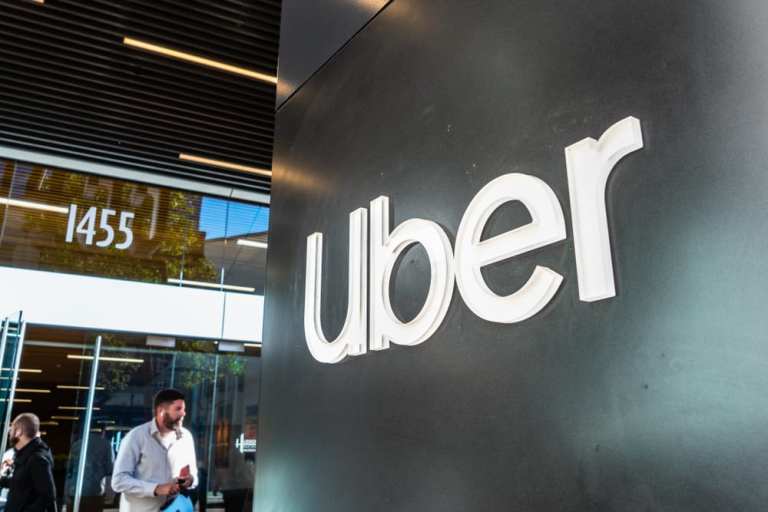Uber CEO Sees Cash Position As Downturn Defense

In business, cash is king.
It’s a saying that underpins examining companies’ balance sheets and cash flow. The more money in the proverbial bank, goes the thinking, the more money is on hand to deploy for strategic acquisitions, to leverage into R&D (and innovation) or simply weather an economic storm.
Or, depending on the size of the cash cushion, money can be used for any and all of the above efforts.
In one example, Uber Technologies said that it has billions of dollars in cash on hand — a tally that should reach as much $6 billion at the end of the year. Management said on a conference call with analysts Thursday that the cash, along with a $2 billion revolver, comes amid the continued impact of COVID-19. In a nod toward at least one market’s (partial) recovery from the pandemic, CEO Dara Khosrowshahi said that ride-hailing in Hong Kong saw a decline of 45 percent from peak levels; that tally now is 30 percent off peak levels, indicating some improvement.
Khosrowshahi said that every city will be different in terms of how business fares in each locale. He said the core ride-hailing business is down 60 percent to 70 percent in the places where coronavirus is seeing the most impact, such as Seattle.
He also said that Uber Eats “is an important resource right now. Even in Seattle, our Eats business is still growing.”
And here lies a possible key to what all that cash might do: continue to let Uber, in the midst of what increasingly looks like a sharp recession, build out its platform, where cross-pollination may be a buffer against the shocks of changing consumer behavior.
The company has said it has $10 billion in unrestricted cash and as much as $1.5 billion committed for mergers and acquisitions.
Should a worst-case scenario materialize, as detailed on the call, and rides decline 80 percent globally, the company would still have $4 billion in cash and the $2 billion revolver.
“About two-thirds of our cost of revenue and operating expense, excluding stock-based compensation, is variable,” the CEO said, and those costs (because they are variable) vanish if rides do not materialize.
Lyft, by way of comparison — a “purer” play on transportation that Uber — had a total cash position of about $2.8 billion at the end of last year. In its latest earnings report it said it has moved from being a ride-sharing platform toward “a complete transportation network,” with scooters and bikes in the mix.
Uber, for its part, emphasizing diversified revenue streams, said it has been moving its drivers toward Eats deliveries, which means that there can be at least some revenue opportunity for the firm, income opportunity for the drivers, and stickiness across the platform.
Looking Toward Cross-Pollination
Khosrowshahi signaled last month that cross-pollination efforts have borne fruit. During the last conference call with analysts to discuss fourth quarter results, the firm saw that cross-platform users were up by 68 percent.
Management has also said that Uber Eats is a segment in “early innings,” and gross bookings were up 73 percent. The take rate (adjusted net revenue per order) improved as well. Uber Eats, said Khosrowshahi on the call, has become a resource for companies that have been hit by closures that seek to stem the spread of coronavirus. He said that the company’s food and beverage sales team has been signing up new restaurants at a rate multiple times more than what had been seen previously.
In the last earnings call, management reported that in the U.S. alone, business grew by 44 percent in gross bookings, and that at the end of the year there were 400,000 active restaurants, up 78 percent year on year.
The seismic shift toward the food delivery business is reflected, at least in part, by DoorDash’s recent confidential filing for an IPO earlier this year, and its announcement this week that through the end of next month it will waive commission fees for independent restaurants in the U.S., Canada, Puerto Rico and Australia. The company has estimated that it can raise as much as $200 million in additional sales for restaurants.
Looking beyond the ride hailing and restaurant-focused businesses and turning to Uber’s freight business, it’s a fair bet to say that unit (connecting truck drivers with shippers) may see some significant headwinds in a recession. But during the fourth quarter, adjusted net revenues were up 75 percent, while volumes were up 89 percent. Any economic rebound would be a tailwind.
Writing in this space a little less than a year ago, Karen Webster noted that, “Uber describes its business as one that ‘ignites opportunity by setting the world in motion.’ That means it is a platform that helps people and businesses solve their logistics challenges. The company has created a metric to measure business performance in those terms. Monthly Average Platform Consumers (MAPC) measures gross bookings from what Uber refers to as its core platform business — ridesharing and Uber Eats — among consumers who use the Uber platform at least once a month, averaged across a quarter.” That MAU tally stood at 111 million as of the last quarter.
The world has changed markedly in the last few weeks (days, too, and even hours, it seems). But platforms that anticipate, embrace and can accommodate marked shifts in consumer behavior might be best positioned to weather those changes.